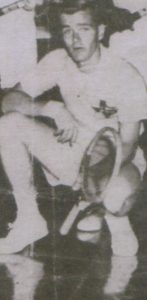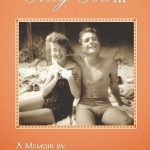Of late, I’ve received a number of questions regarding anthologies. So today, I’m going to talk about anthologies.
First, what is an anthology? In the simplest terms, an anthology  is a collection of written works. It can be a collection of poems, plays, short stories, songs, novellas, or excerpts from longer books. These do not have to be related in any way, although often there is a theme associated with the anthology. There is not a real limit on how many – no minimum and no maximum. The works are generally chosen by a compiler, which can be a single person or a committee. An anthology generally contains works by several authors. However, there is nothing preventing an anthology containing various works of a single author. And, today, anthology may be used for a series of TV shows, or recordings of a single group or performer.
is a collection of written works. It can be a collection of poems, plays, short stories, songs, novellas, or excerpts from longer books. These do not have to be related in any way, although often there is a theme associated with the anthology. There is not a real limit on how many – no minimum and no maximum. The works are generally chosen by a compiler, which can be a single person or a committee. An anthology generally contains works by several authors. However, there is nothing preventing an anthology containing various works of a single author. And, today, anthology may be used for a series of TV shows, or recordings of a single group or performer.
So, there is much room for an anthology to take various forms. But, here are some suggestions to consider if you or your group is thinking about producing an anthology.
It is often a good idea to have a specific theme for the anthology. For instance, an anthology of mystery short stories. Or an anthology of great opening chapters. How about an anthology of poems associated with Valentine’s day? An anthology of one-act plays. It is best to have a defined theme, but one not so narrowly focused that few items will be submitted.
Along with a specific theme, a specific goal should be set. It should be in writing, agreed upon by those involved, and re-read at every meeting. Some examples of a goal might be to highlight the writing talent of the best in your group, or area, or whatever domain you are choosing. Or, it might be to give a chance at publication to many who have not been able to achieve that yet. It could be to reward many authors who submitted an entry to your contest, or selected people who attended your conference. Please note, this is generally different from the theme, although it is certainly possible the two could be the same, or similar.
While we are on the subject of a goal, the organizers must decide how finances will be handled. How will the project cover expenses upfront? Decisions need to be made early whether the anthology will be sold for a profit, or given away. I recommend, for anthologies made up of works from authors without a huge following, it is agreed  that royalties will not be paid. Naturally, this must be determined before the call for entries. If the project pays for the expenses of production and a surplus exists, from the beginning those submitting works should agree any profits be used either to fund the next project, or donated to help the library or some other group fostering literacy. If you have high profile authors involved, then the division of royalties should be clear before submissions are sought.
that royalties will not be paid. Naturally, this must be determined before the call for entries. If the project pays for the expenses of production and a surplus exists, from the beginning those submitting works should agree any profits be used either to fund the next project, or donated to help the library or some other group fostering literacy. If you have high profile authors involved, then the division of royalties should be clear before submissions are sought.
It is best if the anthology is viewed as a group project. This is particularly true in the early stages. Get the group behind it and you are halfway there. A committee can and should work on finding participants (authors), help in the selection process, and offer to proofread the document before submitting it for publication.
 However, it is best to have one editor. There can be a committee to help during the selection process. But when you are getting down to the final editing, while several may read for possible mistakes, a single person should be making the final decisions. Committees can get hung up with differing opinions and the project can grind to a halt. In the end, one person has to be in charge to complete the project.
However, it is best to have one editor. There can be a committee to help during the selection process. But when you are getting down to the final editing, while several may read for possible mistakes, a single person should be making the final decisions. Committees can get hung up with differing opinions and the project can grind to a halt. In the end, one person has to be in charge to complete the project.
Anthologies can be an excellent project for a writing group. It can generate a lot of enthusiasm and participation. It can serve as excellent publicity, and often results in increased membership. Anthologies often prompt people who are reluctant to write, or to try for publication, to overcome that hesitation and become an active writer.
And they can be fun.
James R. Callan
Please add your thoughts on anthologies. We can get an anthology of thoughts on anthologies. Click the “comments” below.

 My mother and I were doing some Christmas shopping one day before Christmas (of course). Here, I do not mean “one day” as the day before Christmas, but “one day” as in “a single day.” We had bought an item at the Harris store in Oak Cliff. While we waited for the sale to be processed, I let slip a complaint about the wart on my finger. Perhaps I had served a double-fault the day before, or some other wart-induced calamity. But I did complain about my wart.
My mother and I were doing some Christmas shopping one day before Christmas (of course). Here, I do not mean “one day” as the day before Christmas, but “one day” as in “a single day.” We had bought an item at the Harris store in Oak Cliff. While we waited for the sale to be processed, I let slip a complaint about the wart on my finger. Perhaps I had served a double-fault the day before, or some other wart-induced calamity. But I did complain about my wart.



 We traveled to Tyler, had a leisurely dinner and returned home about nine o’clock. But as we were driving in, a large tree had fallen across our driveway. It was too big for me to move by myself, but between the two of us, we were able to push it off enough to get the car by.
We traveled to Tyler, had a leisurely dinner and returned home about nine o’clock. But as we were driving in, a large tree had fallen across our driveway. It was too big for me to move by myself, but between the two of us, we were able to push it off enough to get the car by. emergency room of the nearby hospital. They quickly determined she had a ruptured appendix and wheeled her into the operating room.
emergency room of the nearby hospital. They quickly determined she had a ruptured appendix and wheeled her into the operating room. Now, years later, we have several chainsaws. We always have at least two good, heavy duty,
Now, years later, we have several chainsaws. We always have at least two good, heavy duty, working gasoline chainsaws. We have an electric chainsaw for light work close to the house or barn. We have a small chainsaw on a pole for trimming limbs on standing trees.
working gasoline chainsaws. We have an electric chainsaw for light work close to the house or barn. We have a small chainsaw on a pole for trimming limbs on standing trees.

